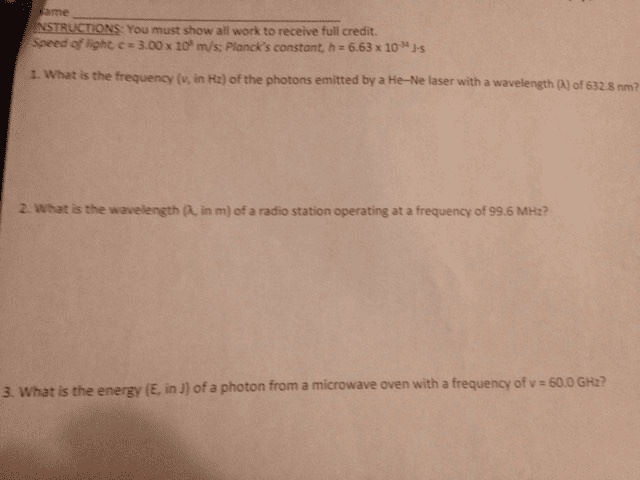CHEM 101 Lecture Notes - Lecture 10: Photon, Effective Nuclear Charge, Niels Bohr
Document Summary
Light is a form of energy referred to as electromagnetic radiation. Frequency (v)= speed of light (c)/ wavelength (x) Speed of light is a constant at 3. 00 x 10^8 m/s. E=hv=hc/x where: e= energy of photon, h= planck"s constant (6. 63 x 10^-34 j, c= speed of light, x= wavelength. Blue light is shorter with a higher frequency while red is longer with a low frequency. Longer waves have low energy while short waves have high energy. The whiter light is, the hotter it is. Elements absorb energy as heat and give off as light. Niels bohr proposed that electrons moves in circular orbits. Ground state- electron is in its lowest energy level possible. Energy is absorbed when an electron moves outward and emitted when it moves closer to the center. Effective nuclear charge is the charge felt by an electron in the outer energy level. 1/x= -r(1/n^2f 1/n^2i) where r= 1. o97 x10^7.


